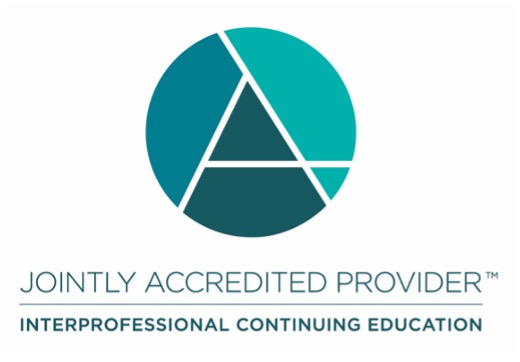Health Hazards of Phosphate Food Additives
The amount of phosphate-containing food additives in the US has substantially increased over the past several decades.1-3 This is due to the increase in the production of ultra-processed foods, a high percentage of which contain phosphate additives4; phosphate food additives serving a wide variety of functions (such as leavening agents, stabilizers, thickeners, emulsifiers, acidifiers, flavoring agents, anticaking agents, dough strengtheners, antimicrobials, and color enhancers4); and a lack of Food and Drug Administration (FDA) regulation of the majority of phosphate-containing additives due to their “Generally Recognized as Safe” (GRAS) status.4
Over 50,000 unique food products, representing over 85% of all food products sold in the US, contain one or more phosphate additives.5 These additives include 28 inorganic phosphate salts4 (e.g., phosphoric acid, sodium phosphate, potassium phosphate, and sodium polyphosphate), as well as over a dozen organic phosphate additives, which lack the “phos” identifier, such as lecithin (which is phosphatidylcholine and contains as much as 2,000 mg phosphorus per 100 g6) and modified food starch (e.g., acetylated distarch phosphate and monostarch phosphate1,7) and contribute approximately 12% to 50% to daily phosphorus intake.2,7,8
A diet based on foods containing phosphate additives can have up to 1,000 mg more phosphorus than a diet composed of minimally processed foods.2,9 The increase in highly absorbable phosphate additives to our food supply is cause for concern not only for the 35.5 million Americans with chronic kidney disease (CKD)10 who have limited capacity to excrete excess phosphorus and suffer many health consequences, including cardiovascular and bone diseases and increased mortality5 as a result but for the general population as well. A growing body of evidence demonstrates associations between typical daily phosphorus intakes (which are about twice the Recommended Dietary Allowance [RDA])11 and increased risks for all-cause and cardiovascular mortality; several diseases (e.g., cardiovascular diseases, type 2 diabetes, and certain cancers); and biomarkers for bone, cardiovascular and kidney diseases in the general population.5,12-15 The FDA does not mandate that the amount of phosphorus—either in total or from phosphate additives—be included on the Nutrition Facts Panel (NFP) of the food label,16 disadvantaging Americans who wish to make fully informed choices regarding their intake of phosphate additives.
The aim of this article is to raise awareness of the possible adverse health effects of these ubiquitous phosphate additives among the general population and offer strategies to decrease intake.
Learning Objectives
After completing this activity, nutrition professionals will be better able to:
- Name the foods and/or food categories where phosphate food additives are most commonly found.
- Discuss the proposed mechanisms of action that explain how chronic phosphate additive consumption may cause tissue damage and disease.
- List the adverse health outcomes that habitual exposure to phosphate additives may cause.
- Discuss strategies to help clients reduce their intake of phosphate food additives.
Additional Information
Joyce Marcley Vergili, EdD, RDN, CSR, CDN, CDCES, FAND, has a B.S. in Nutritional Sciences, an M.S. in Clinical Nutrition, and an Ed.D. (Doctor of Education) in Nutrition Education, and is a Fellow of the Academy of Nutrition and Dietetics (FAND).
Since 2001, Dr. Vergili has held clinical, research, and academic positions in the field of nephrology nutrition. She conducted National Kidney Foundation-funded research on the practice patterns of renal dietitians working in dialysis centers (published in the Journal of Renal Nutrition in 2010) and served as an advisory group member to support the implementation aspects of the Academy of Nutrition and Dietetics’ sponsored Assessing Uptake and Impact of Guidelines for Clinical Practice in Renal Nutrition (AUGmeNt) study. Dr. Vergili is the lead author or coauthor for many peer-reviewed papers, including a commentary on phosphorus management and a recent editorial urging dietitians and healthcare professionals to submit comments to the FDA on phosphate food additive safety.
A passionate educator, Dr. Vergili enjoys writing continuing professional education courses, creating and presenting webinars, and teaching classes on MNT for chronic kidney disease to graduate nutrition students at Teachers College-Columbia University in New York City.
Dr. Vergili is currently a research consultant for the Academy of Nutrition and Dietetics and a freelance nutrition writer and educator. She lives in the beautiful Hudson River Valley in New York with her husband.
Disclosures
Joyce Marcley Vergili, EdD, RDN, CSR, CDN, CDCES, FAND, faculty for this activity, has no relevant financial relationship(s) with ineligible companies to disclose.
The planners for this educational activity have no relevant financial relationship(s) with ineligible companies to disclose.
An “ineligible company” includes any entity whose primary business is producing, marketing, selling, re-selling, or distributing healthcare products used by or on patients.

In support of improving patient care, Great Valley Publishing Company (publisher of Wolf Rinke Associates) is jointly accredited by the Accreditation Council for Continuing Medical Education (ACCME), the Accreditation Council for Pharmacy Education (ACPE), and the American Nurses Credentialing Center (ANCC), to provide continuing education for the healthcare team.
This activity will also award credit for dietetics (CDR CPEU).
RDs and DTRs are to select activity type 102 in their Activity Log. Sphere and Competency selection is at the learner’s discretion.
Available Credit
- 7.00 CDR

 Facebook
Facebook X
X LinkedIn
LinkedIn Forward
Forward